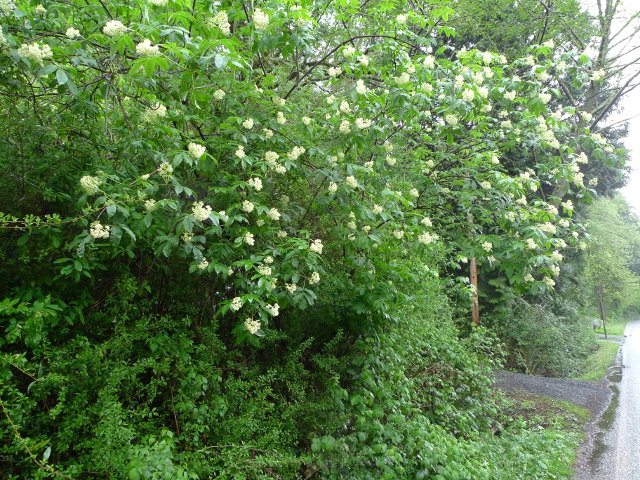Red Elderberry
Published at 11:11 on 8 May 2018
The Red Elderberry (Sambucus racemosa) bushes are in bloom. The warm days we are having are really making things go fast. I took this picture just a week ago when it seemed the blossoms were just opening, and already they seem more than half-done.
Elderberry flowers tend to get ignored by many, or at least not much talked about. That’s always been a mystery to me, as they are quite ornamental. The flowers occur in pyramidal (not flat) clusters and ripen into shiny red fruit.
This is our native elderberry. It has a reputation for being poisonous, which is mostly true. The exception is that the ripe fruits can be eaten provided they are cooked thoroughly first. I have yet to try them, so cannot offer my opinion as to how good (or otherwise) they taste. Birds relish the fruit and in so doing disperse the seeds of this shrub.
Those who travel to the east slopes of the Cascades (or to select areas of the east slopes of the Olympics) might be familiar with the related Blue Elderberry (Sambucus mexicana or Sambucus cerulea), a shrub or small tree that bears choice fruit. The Blue Elderberry’s flowers resemble those of the Red Elderberry, but occur in large flat (never pyramidal) clusters. As its name implies, the ripe fruit is covered with a bluish waxy bloom.
The Blue Elderberry is a close relative of the European Black Elderberry (Sambucus nigra); and like that elderberry its fruits are edible and its flowers can be used to make syrups or tea.

